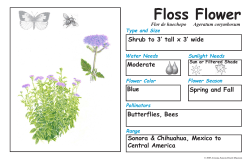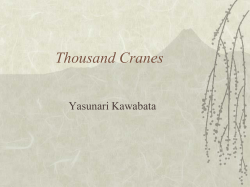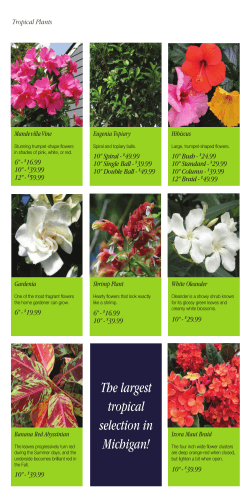
to - Coronation Meadows
A selection of common plants you might see when you are out enjoying meadows Betony Birds foot-trefoil Common knapweed Cowslip Betonica officinalis Lotus corniculatus Centaurea nigra Primula veris This vivid magenta wild flower was used in the past as to protect against sorcery and according to the Anglo Saxon Herbal - 'frightful nocturnal goblins Also known as 'eggs and bacon', this plant is a good source of nectar for insects and forage for cattle. The 'bird'sfoot' of its name refers to the shape of its seed pods A thistle-like plant also known as 'black knapweed', although its flowers are actually bright pink. It is a popular source of nectar for the Red Admiral, and many other butterflies. Its name allegedly derives from the term ‘cowslups', meaning cowpat; they flower where a cow had ‘slupped'. More appealingly, the flowers have an apricot-like smell. Common spotted orchid Field scabious Dactylorhiza fuchsii A pin-cushion-like flower which our ancestors believed cured scabies. It was once thought by herbalists to be a remedy for wounds and sores, dandruff and unwanted freckles Our most common orchid enlivens many places. Its flowers can vary from deep to light pink and the leaves are marked with spots Knautia arvensis Greater burnet Meadow buttercup Ox-eye daisy Red clover Self-heal Yellow rattle Sanguisorba officinalis Ranunculus acris Leucanthemum vulgare Trifolium pratense Prunella vulgaris Rhinanthus minor The bulbous, blood-red heads of this member of the rose family often indicate a floodplain meadow. Burnet comes from the Old French for 'dark brown' - the same source as 'brunette'. A giant relative of the buttercups often on lawns. Its likely this flower put the 'butter' in buttercup given its tendency to grow in meadows grazed by dairy cows. The oxeye daisy has only been known as such since the 16th century. Before that it was more commonly known as the 'moon daisy' or 'dog daisy' Not as common as its white relation, its reddish -pink flowers form oval clusters and its leaves while still recognisably 'cloverleaf' shaped - are larger, downy and marked with a white 'V'. Its name derives from the use of some species to treat minor disorders. It is reported to have an antiseptic and antibacterial effect, and to be particularly good in cases of food poisoning. This semi-parasitic flower feeds off nutrients in nearby grass roots which helps restrict vigorous grasses, allowing more delicate wildflowers to emerge. Its 'rattle' is from tiny seeds in their pods. A meadow in every county to celebrate the 60th anniversary of the Queen’s coronation Please tweet photos of any meadow flowers you spot @CoronationMdows coronationmeadows.org.uk
© Copyright 2025





















